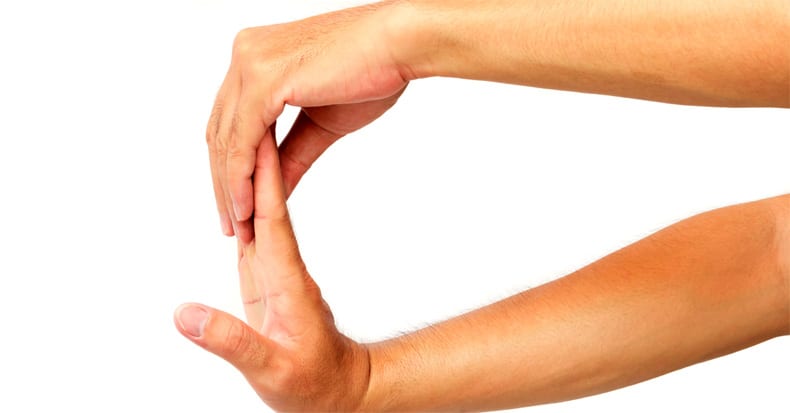There are nine tendons that pass through the carpal tunnel at the wrist that connect the forearm muscles to the palm-side of the fingers. These tendons are encased in sheaths, and friction and heat can build-up inside these sheaths, leading to swelling, pressure, and pain (especially during fast, repetitive tasks). As the swelling increases and pressure builds up inside the tight space of the tunnel, the median nerve is pushed into the transverse carpal ligament, which serves as the floor of the tunnel, resulting in the symptoms we commonly associate with CTS. Stretching helps reduce this tightness and friction.
The stretching exercises listed below can BOTH help CTS as well as prevent it from occurring or re-occurring. As a warm-up:
- Rotate the wrist in multiple directions—up, down, side-to-side, and figure 8s.
- Spread your fingers as wide as you can and pull the fingers back using your other hand (or a wall) keeping the elbow straight.
- Repeat step two, but this time, stretch the thumb back.
Repeat these steps five to ten times—enough to feel the forearms and hands loosen up.
The Prayer: Place your palms completely together like you are praying (keep the heels of the hands together) next to your chest and slowly lower the hands toward the floor while keeping the hands close to your body. Hold for 15-20 seconds.
Forearm Flexors: Arm straight, palm against the wall, fingers point downward, reach across and gently pull the thumb back. Hold for 15-20 seconds.
Forearm Extensors: Arm straight, back of the hand against the wall, fingers pointing downward. Hold for 15-20 seconds.
Repeat the above exercises three to four times and focus on feeling the muscles “release.” Try to do this three to five times a day, ESPECIALLY during the busy work day to “break-up” the monotony of fast, repetitive work tasks that can increase heat and friction in the sheathes surrounding the tendons that pass through your wrist.
Your doctor of chiropractic may recommend ice cupping over the wrist/s (palm side) and using a night splint on the affected wrist/s, in addition to exercises (like those above) and job modifications aimed at reducing CTS risk. Treatment may also include the use of manual therapies applied to the forearm, wrist, and hand, as well as the elbow, shoulder, and neck as these areas are frequently involved and must also be addressed to optimize the patient’s outcome.
